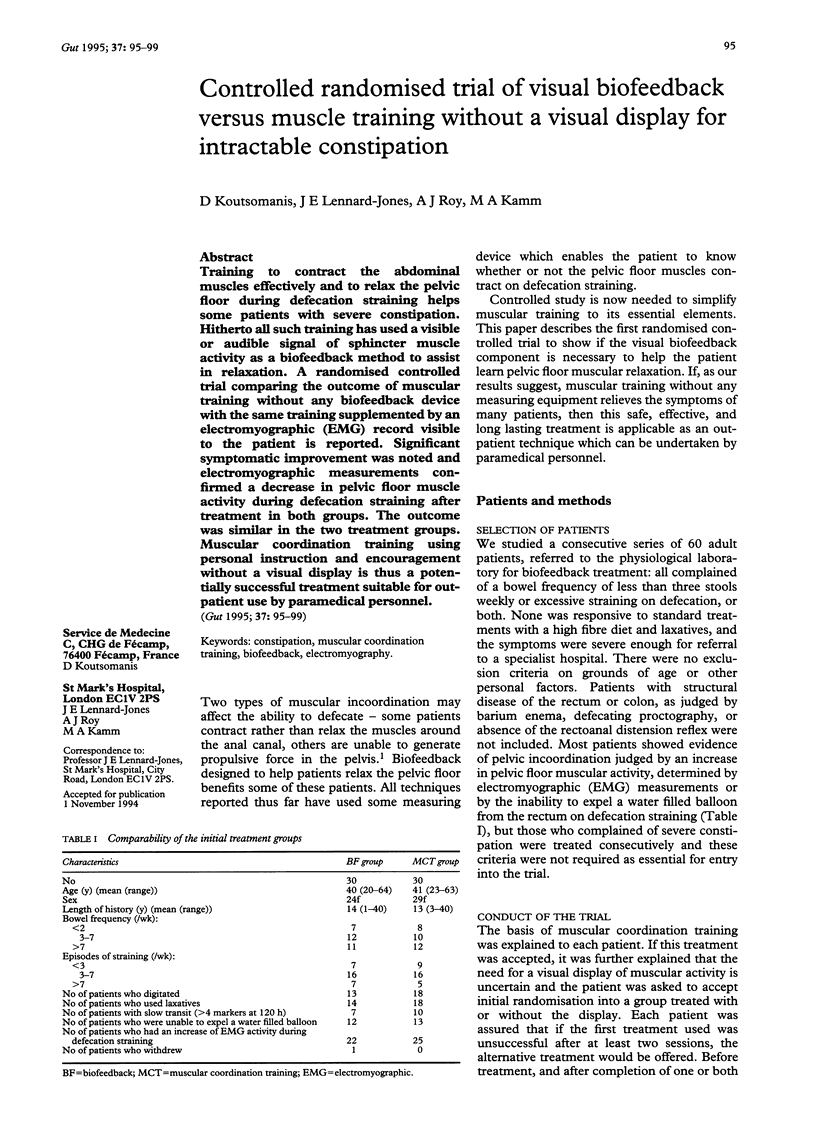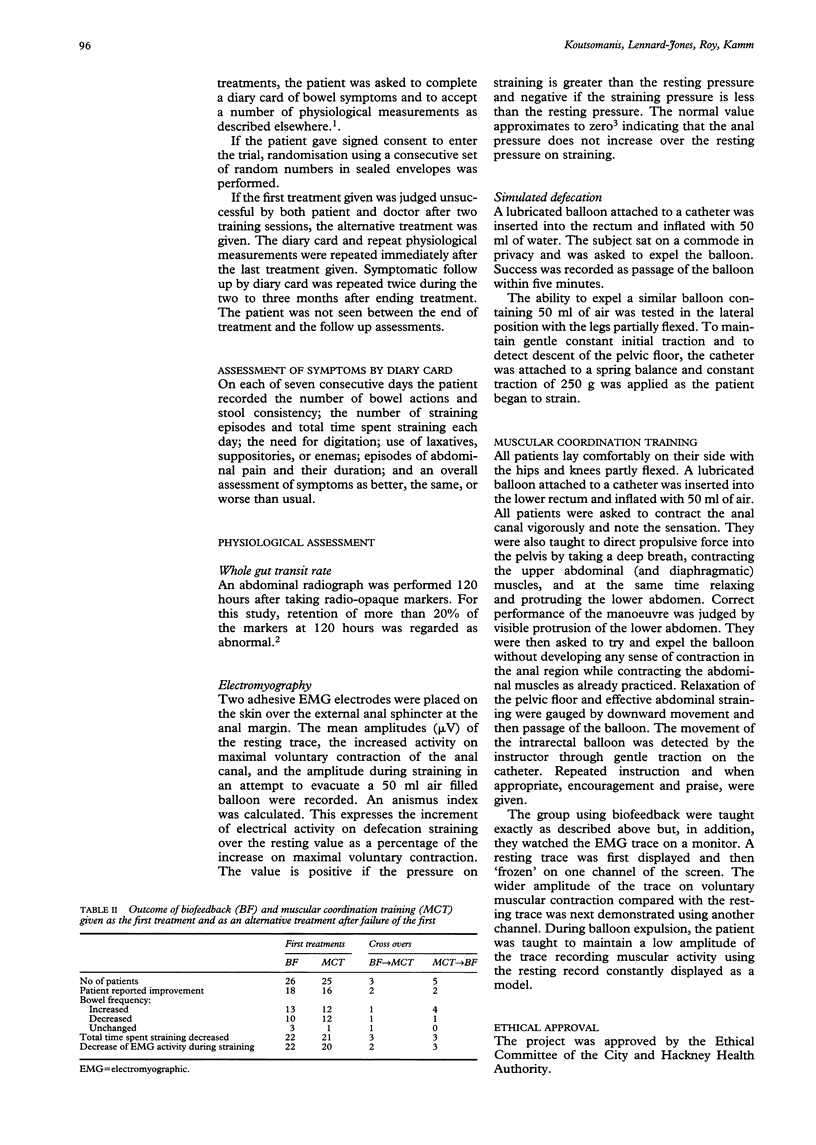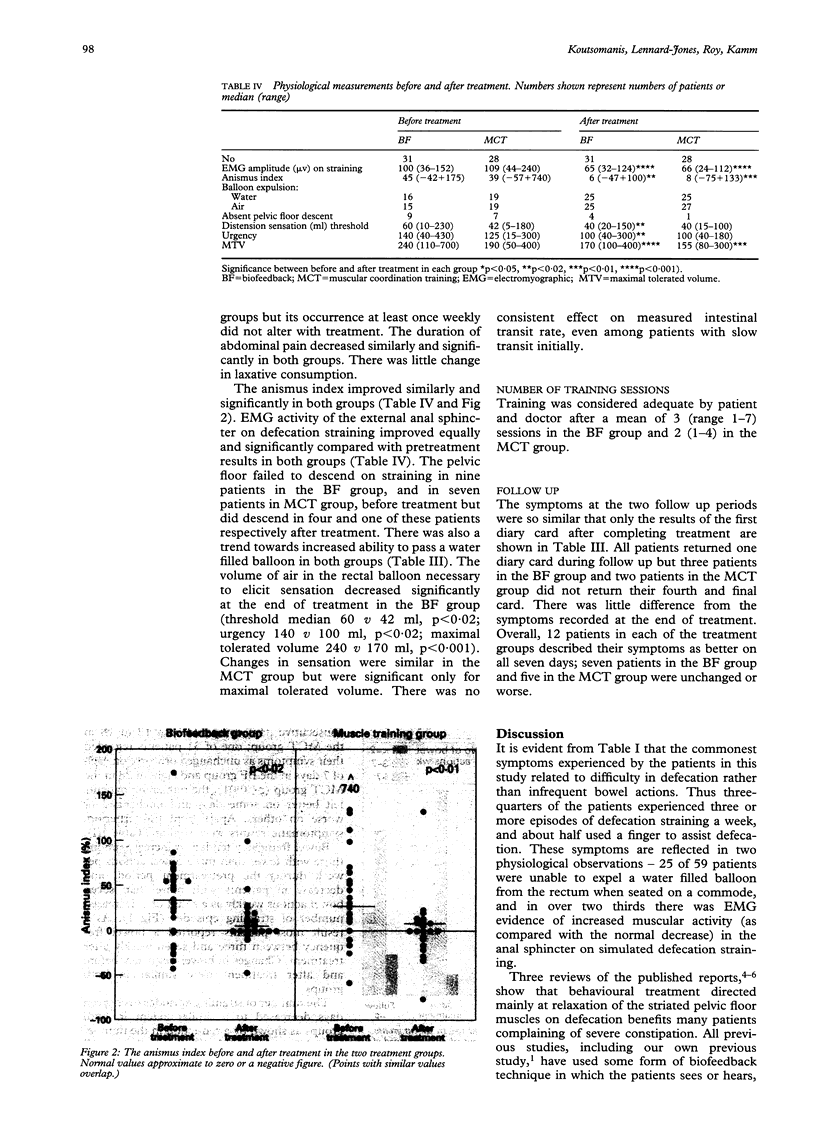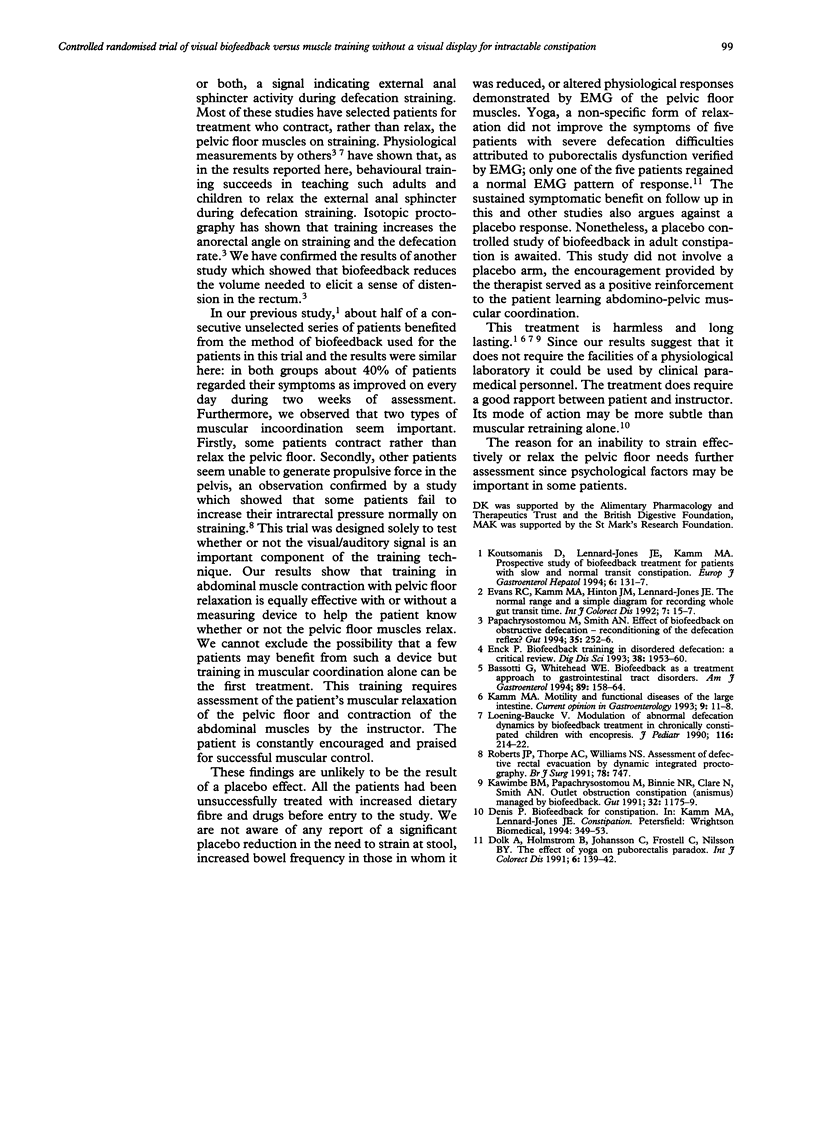Abstract
Training to contract the abdominal muscles effectively and to relax the pelvic floor during defecation straining helps some patients with severe constipation. Hitherto all such training has used a visible or audible signal of sphincter muscle activity as a biofeedback method to assist in relaxation. A randomised controlled trial comparing the outcome of muscular training without any biofeedback device with the same training supplemented by an electromyographic (EMG) record visible to the patient is reported. Significant symptomatic improvement was noted and electromyographic measurements confirmed a decrease in pelvic floor muscle activity during defecation straining after treatment in both groups. The outcome was similar in the two treatment groups. Muscular coordination training using personal instruction and encouragement without a visual display is thus a potentially successful treatment suitable for outpatient use by paramedical personnel.
Full text
PDF




Selected References
These references are in PubMed. This may not be the complete list of references from this article.
- Bassotti G., Whitehead W. E. Biofeedback as a treatment approach to gastrointestinal tract disorders. Am J Gastroenterol. 1994 Feb;89(2):158–164. [PubMed] [Google Scholar]
- Dolk A., Holmström B., Johansson C., Frostell C., Nilsson B. Y. The effect of yoga on puborectalis paradox. Int J Colorectal Dis. 1991 Aug;6(3):139–142. doi: 10.1007/BF00341233. [DOI] [PubMed] [Google Scholar]
- Enck P. Biofeedback training in disordered defecation. A critical review. Dig Dis Sci. 1993 Nov;38(11):1953–1960. doi: 10.1007/BF01297069. [DOI] [PubMed] [Google Scholar]
- Evans R. C., Kamm M. A., Hinton J. M., Lennard-Jones J. E. The normal range and a simple diagram for recording whole gut transit time. Int J Colorectal Dis. 1992 Feb;7(1):15–17. doi: 10.1007/BF01647654. [DOI] [PubMed] [Google Scholar]
- Kawimbe B. M., Papachrysostomou M., Binnie N. R., Clare N., Smith A. N. Outlet obstruction constipation (anismus) managed by biofeedback. Gut. 1991 Oct;32(10):1175–1179. doi: 10.1136/gut.32.10.1175. [DOI] [PMC free article] [PubMed] [Google Scholar]
- Loening-Baucke V. Modulation of abnormal defecation dynamics by biofeedback treatment in chronically constipated children with encopresis. J Pediatr. 1990 Feb;116(2):214–222. doi: 10.1016/s0022-3476(05)82877-x. [DOI] [PubMed] [Google Scholar]
- Papachrysostomou M., Smith A. N. Effects of biofeedback on obstructive defecation--reconditioning of the defecation reflex? Gut. 1994 Feb;35(2):252–256. doi: 10.1136/gut.35.2.252. [DOI] [PMC free article] [PubMed] [Google Scholar]


